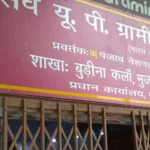Mumbai: In July, India’s credit card market witnessed significant growth, underscoring a resurgence in consumption demand as lenders resumed expanding their customer base. According to the Reserve Bank of India (RBI), the total credit card expenditure rose to ₹1.93 lakh crore, marking a 5.5% increase from June and a 33% surge compared to last year. The banking sector showed improved optimism, with major banks like HDFC Bank and ICICI Bank leading in new card additions.
Revival in Credit Card Activity
As India’s economy gradually rebounds, the credit card segment serves as a bellwether for urban consumption patterns. The latest figures from the Reserve Bank of India (RBI) reveal a robust month for credit cards, with the total expenditure hitting ₹1.93 lakh crore in July. This represents a remarkable 5.5% improvement from June and an impressive 33% year-on-year growth. Such statistics indicate a recovering consumer sentiment as more people return to shopping and spending in physical and online stores.
The uptake in credit cards aligns with analysts’ observations regarding the resurgence of risk appetite among mainstream lenders. “Bank commentaries suggest that incremental delinquencies have plateaued,” noted Nitin Aggarwal, head of BFSI at Motilal Oswal Securities, pointing to a more favorable environment for lending. As a result, top private banks are expected to demonstrate enhanced traction in unsecured loans in the coming quarters.
Leading Players in the Market
HDFC Bank, India’s most valued lender, drove the growth momentum by adding 315,000 credit cards in July, bringing its total to 24.8 million. Meanwhile, SBI Cards, the second-largest player, recorded a slower pace with only 66,640 new additions, reaching a total of 21.2 million. The competitive landscape was further highlighted by ICICI Bank’s recovery; after a significant decline in June of over 287,000 cards, it bounced back with 67,664 new cards, totaling 18 million.
Axis Bank also demonstrated resilience with 122,000 new card additions in July. Conversely, Kotak Mahindra Bank managed a marginal increase of just 1,759 cards after facing a sharp decline last month. This fluctuation among different lenders underscores the mixed sentiments in the banking sector, influenced by factors such as risk-based pricing and market conditions.
Banking Sector Trends and Insights
The ongoing transition in risk management practices is evident, with more banks adopting risk-based pricing during product underwriting. As Aggarwal pointed out, “Risk-based pricing is now well embedded in product underwriting, and gradual improvement in margins and credit cost trajectory will further support profitability.” This strategic shift in how credit is allocated indicates that lenders are becoming more cautious yet optimistic about the future.
Despite the recent upturn, experts warn of emerging challenges. The unsecured retail segments, which include credit cards, traditionally enjoyed a compound annual growth rate (CAGR) of 25% between FY21 and FY24. However, this growth has moderated sharply to about 8.5% year-on-year, largely impacted by rising stress levels and diminishing consumer demand. Such trends serve as a crucial reminder for banks to balance growth strategies with credit quality.
Performance of Mid-Sized Lenders
While larger banks have shown promising numbers, the situation among mid-sized lenders appears more nuanced. IDFC First Bank and Federal Bank recorded substantial additions of 86,441 and 84,538 new cards respectively. However, RBL Bank has found itself on a downward path, shrinking its card base by over 41,000 in July after halting its collaboration with Bajaj Finance last November.
” We have been consciously growing this (credit card) portfolio slower,” said Jaideep Iyer, head of strategy at RBL Bank. His cautious approach underlines a broader trend among banks to elevate standards for new credit origination, ensuring that credit card portfolios contribute meaningfully to customer acquisition without compromising asset quality.
Conclusion: A Mixed Outlook for the Banking Sector
As the Indian economy continues to stabilize, the recent uptick in credit card activity may herald a new chapter for lenders and consumers alike. While larger banks dominate the landscape, mid-sized lenders face unique challenges in adapting to shifting market dynamics. With expectations of increased consumer spending amid evolving economic conditions, the banking sector’s performance over the next few quarters will be keenly watched by analysts and stakeholders alike.
In summary, as India navigates its post-pandemic recovery, credit cards will likely play a crucial role in shaping urban consumption, with banks adapting their strategies to balance risk and growth. This evolving scenario in the banking sector will remain central to discussions around India’s broader economic ambitions.
💡 Bankerpedia’s Insight
The resurgence in credit card use signifies a pivotal shift in India’s banking landscape, highlighting lenders’ renewed confidence in consumer spending. With a 5.5% increase in expenditures, this trend suggests a promising outlook for unsecured lending and overall economic health. As major banks explore risk-based pricing, it’s critical for consumers to remain prudent with credit management to mitigate potential debt challenges. Keeping a close eye on spending and understanding repayment options can empower individuals to navigate this evolving financial environment responsibly.
🤔 What Does This Mean for Me?
- Salaried Person → Increased credit availability for spending and financial flexibility.
- Business Owner → Increased consumer spending may boost sales opportunities.
- Student → Increased credit card availability may boost student spending power.
- Self-employed → Easier access to credit for business expenses and growth.
- Homemaker → Easier credit access may enhance spending power for homemakers.
- Retiree / Senior Citizen → Increased credit card usage may affect spending habits.
- Job Seeker → Improved loan availability may benefit job seekers’ finances.
- Farmer / Rural Citizen → Increased credit access may boost rural spending and investment.
📚 Research References
- economictimes.indiatimes.com
- RBI
- SEBI
- Ministry of Finance
- NABARD
- Department of Financial Services (DFS)
📲 Stay ahead in banking & finance!
Join the Bankerpedia WhatsApp Channel for instant updates, and
subscribe to our YouTube Channel for in-depth analysis and expert explainers.










